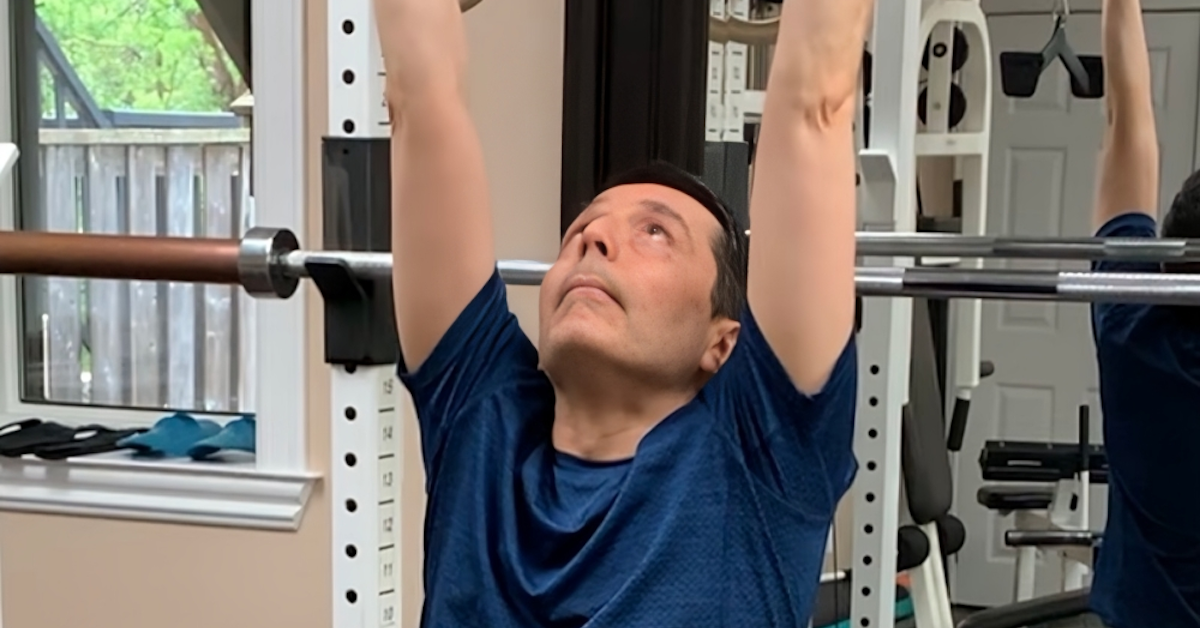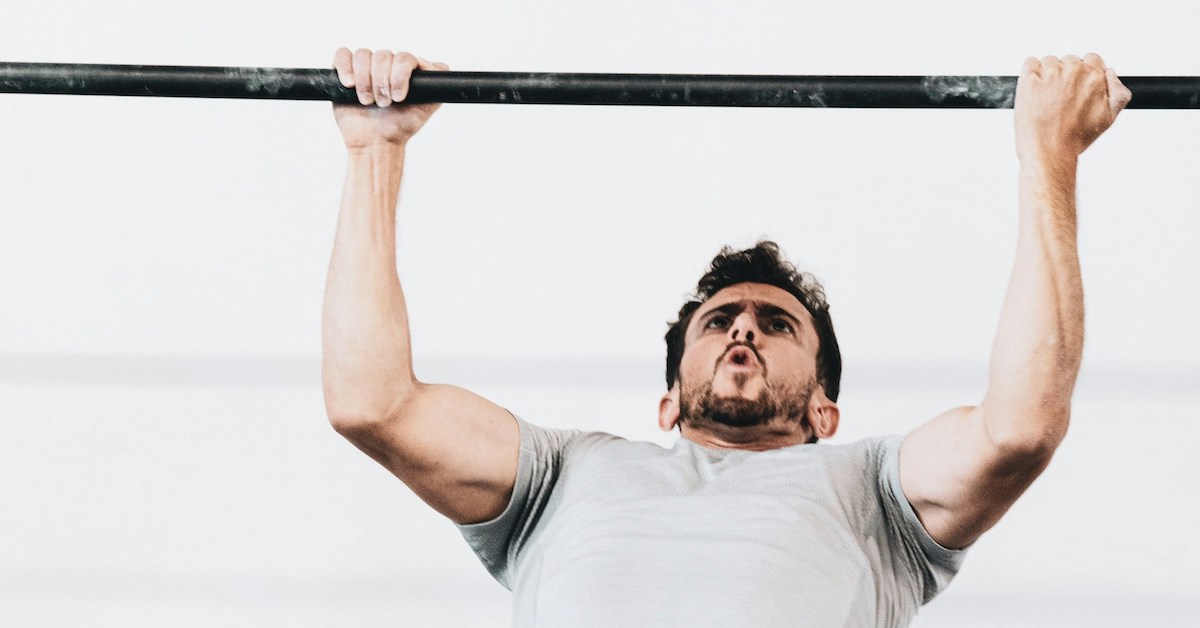If you want bigger, stronger arms but struggle with elbow pain or can’t seem to get the right triceps activation from cable pressdowns, it’s time to rethink your approach. Enter the standing band pressdown — a simple, portable, and highly effective movement that delivers serious results without beating up your joints.
Whether you’re looking for a reliable “feeder” exercise between workouts, or a mainstay triceps-builder in your regular training, this move deserves a spot in your arsenal.
How to Do Standing Band Pressdowns
Setup: Loop a resistance band (in this demo, a purple band) over a chin-up bar on a power cage or any sturdy overhead anchor point.
Grip & Stance: Hold the band at chest level with an overhand grip. Keep elbows glued to your sides, feet shoulder-width apart, and core braced.
Execution: Press the band down until your elbows are fully extended. Squeeze your triceps hard at the bottom and pause briefly in the contracted position.
Return: Control the band back to the starting point — no bouncing.
👉 Pro Tip: Film yourself from the side. If your elbows drift forward, reset. Proper form keeps tension on your triceps instead of shifting it to your shoulders.
Why Choose Bands Over Cables?
Most lifters are familiar with cable pressdowns, but bands offer unique advantages:
- Joint-Friendly: Bands are smooth and forgiving, reducing stress on the elbows. Many people who feel pain during extensions or cables find band pressdowns completely pain-free.
- Perfect Resistance Curve: Bands get harder as you press, matching the strength curve of the triceps. That means peak tension comes where your muscles are strongest — at full extension.
- Better Muscle Activation: With bands, you can pause and squeeze in the contracted position, forcing a strong mind-muscle connection and targeting all three heads of the triceps.
- Recovery-Friendly: High-rep band pressdowns make an excellent “feeder” workout. Pumping blood into the area promotes recovery and tendon health between heavy training sessions.
- Portable: Toss a band in your bag and you’ve got a triceps workout anywhere — at home, at the gym, or on the road.
How to Progress
The beauty of band training is scalability. You can make it more challenging over time with small tweaks:
- Grip Higher: Choke up on the band to increase tension from the start.
- Thicker Band: Switch to a heavier loop as you get stronger.
- Longer Pauses: Hold the contracted position for 1 second in week one, 2 seconds in week two, and so on.
- Tempo Work: Slow down the eccentric (return) to 3–4 seconds for tendon strength and growth.
- Variations: Try reverse-grip pressdowns for the lateral head, single-arm pressdowns to fix imbalances, or iso-holds to bulletproof your elbows.
Integrating Band Pressdowns into Your Routine
Here are a few effective ways to work standing band pressdowns into your program depending on your goals:
- Warm-up: A few light sets can effectively prime your triceps before heavier compound movements.
- Accessory Exercise: Perform 3-4 sets of 10-20 repetitions as an accessory exercise after your main pressing movements (e.g., bench press, overhead press).
- Finisher: For an insane pump, hit 2-3 high-rep sets (20+ reps) with a strong peak contraction at the end of your arm workout.
- Active Recovery: As mentioned, a light set of as many as 50-100 reps on an off-day to promote blood flow and aid recovery.
The Takeaway
Standing band pressdowns aren’t just a replacement for cable pressdowns — they’re an upgrade in many ways. They’re joint-friendly, effective for growth, and versatile enough to be used for recovery, hypertrophy, or strength carryover to pressing lifts.
Grab a band, anchor it high, and give them a shot. Your elbows will thank you — and your triceps will grow.

Target Your Rear Delts Like Never Before
If you’ve struggled to feel your rear delts working—or to fill in that rear delt gap—this variation of the bent-over

Leo’s Chin-Up Journey (Day 1): From Zero to Hero
Can’t Do a Chin-Up? Neither Could Leo… But That’s About to Change. Leo started training with me back in September.

Why Your Chin-Up Grip Could Be Hurting You
For years we’ve been told to avoid behind-the-neck pulldowns and pull-ups. And for good reason — they place a tremendous
follow
Error: No feed with the ID 2 found.
Please go to the Instagram Feed settings page to create a feed.
